Lamar Miller was one of the top free-agent running backs this year. Among the only University of Miami players drafted by the Dolphins in nearly a decade (along with Olivier Vernon in the preceding round), Miller has put in three solid, healthy years as the starting running back, missing no games and averaging 1174 scrimmage yards per season. Thanks to some serious speed (Miller had the best RB 40 time of 2012 and would have been top 3 in every year since), Miller has quietly been an efficiency king at Miami, posting a career YPC of 4.59 and a respectable success rate. But bizarrely, Miller’s 2015 box stats seemed somewhat pedestrian, thanks to a volume of only about 12 carries per game. A number of people started speculating that Ajayi was seen as the future of the backfield, or perhaps that the franchise didn’t trust the run game at all. So what do we know know about Lamar Miller as he makes his jump to the Texans?
Well, to start with, he has clearly ran like an above-average back since being drafted.
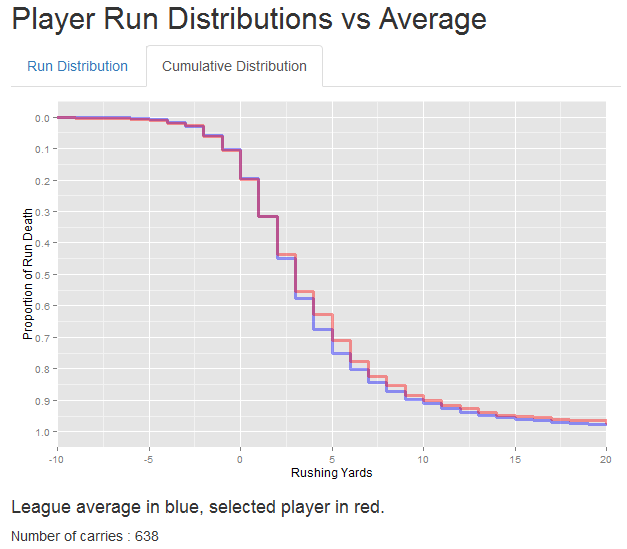
Though his career 4.59 YPC might not seem too far from the 4.18 league-average, 638 carries is a pretty sizable sample, meaning that we can be pretty confident that Miller has been an above-average runner during his time the league. In fact, a league-average running back would only produce a YPC that high given 638 carries only about 5% of the time.
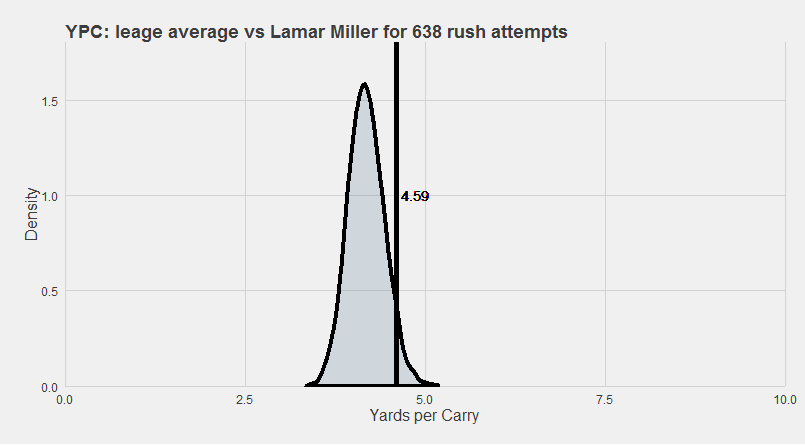
That doesn’t just meet the “yeah he’s probably more likely than not a good runner” standard of evidence. It just about meets the standard of evidence that many scientists use when publishing professional research.
One thing we can look at with our tools is how quickly Miller is able to distinguish himself. We’d only need to see about a 100 carries of each to be able to conclude that Miller is almost certainly a better runner than Trent Richardson:
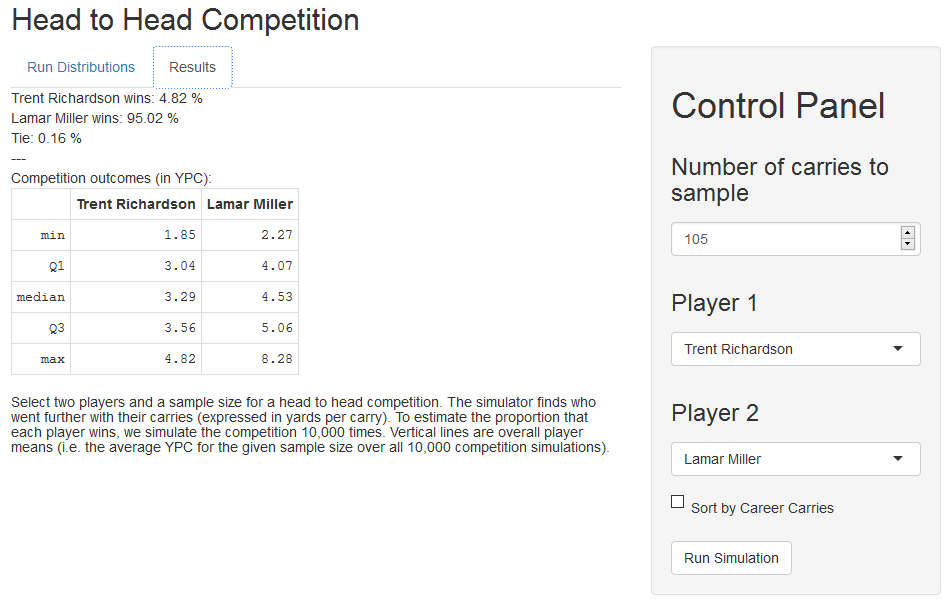
But at the other extreme, Miller actually keeps pace pretty well when stacked up against Jamaal Charles, the best runner in our database. We’d need over five hundred carries from each before we’d be able to comfortably conclude the Charles is clearly the better runner.
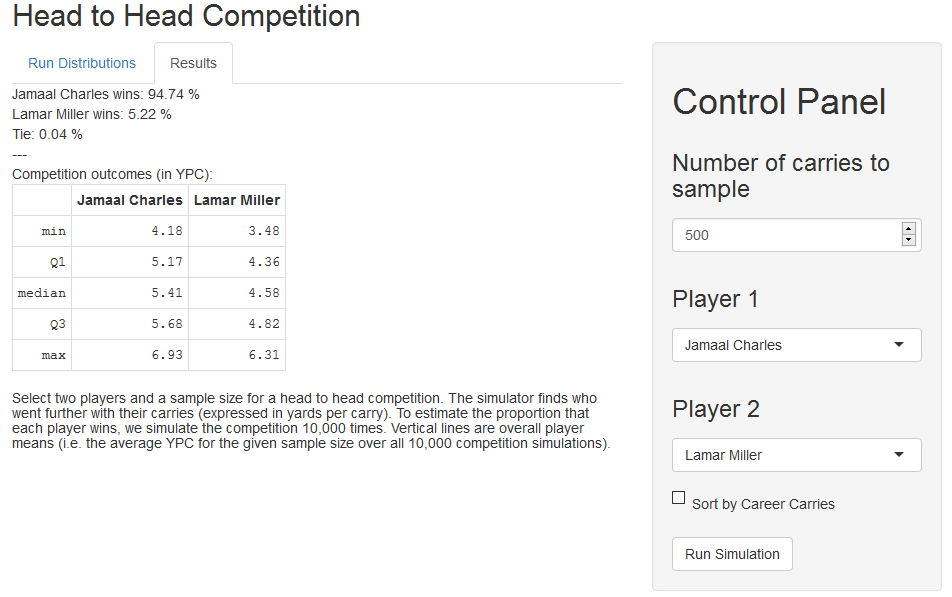
In terms of actual comparables, our player matcher comes through yet again with a #1 match that I really like:
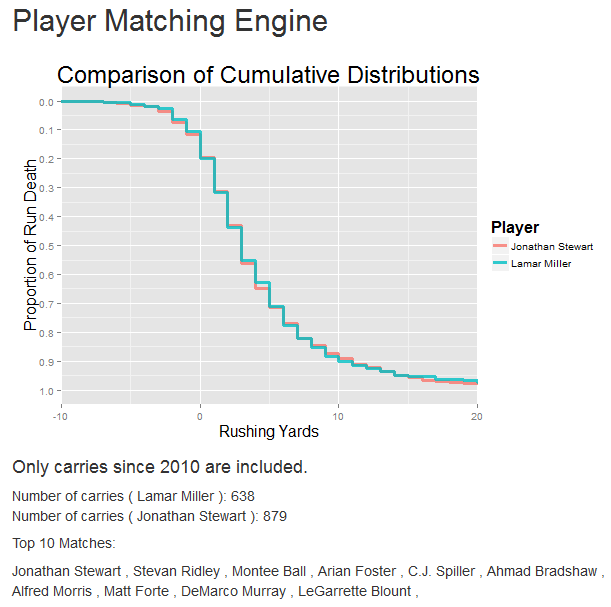
JStew put in a lot of years with similarly low workloads (though by way of a shared backfield), producing with similar efficiency and with a similar penchant for bursts of solid gains. If Miller continues in the NFL as a healthier Stewart, he could have a great career.
And importantly, his successes are probably not attributable to some monster offensive line. Some of the lines he’s worked behind over the past few years have actually been mediocre at best (if not outright deficient). But in addition to the fact that his primary strength is in breaking mid-to-long runs at an above-average clip (where the offensive line contributes most to the RB’s success through the contested yards close to the line of scrimmage), Miller has also pretty decisively outrun his teammates:
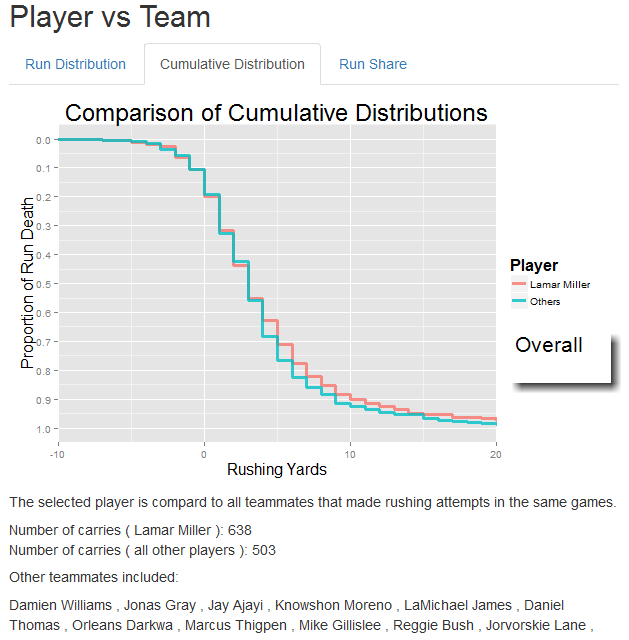
Notably, there are no discernible weaknesses to his rushing output. If he was producing like this with 15 carries a game instead of 12, we’d consider him one of the game’s top grinders, and if he was able to maintain that output as a feature back with 20+ carries per game, he’d be a regular contender for the rushing title.
I think beat reporter James Walker summarized Miller well:
The mystery with Miller has always been can he carry the ball 20-25 times a game? Miami’s coaching staff determined early in his career – maybe his first or second year – that Miller was best at 10-15 carries and often stuck to that throughout his tenure. Miller even gained about 10-12 pounds of muscle last year and things mostly stayed the same.
Miller is at his best once he’s past the first level. He has a nice burst in getting to top speed, although running behind Miami’s offensive line he wasn’t always able to show it. Miller was good at getting chunk plays and capable of huge runs in the open field. I recall he had several big plays against Houston’s defense last year, which likely piqued its interest.
That sounds pretty spot on.
One complaint I still hear about Miller is that he’s a “good 2-down back”, implying perhaps that he is a liability in the passing game or a poor pass-catcher or blocker. Now, this may have been true when Miller came into the league, but both pass protection and yards through the air were the two primary areas where Miller has improved in leaps and bounds during his time with the Dolphins. Miller is now at least a decent pass blocker, and his share of the passing game has increased steadily every year. In 2015, he had about as many catches as Gio Bernard and nearly as many as Charlie Sims (two guys known for their role as pass-catchers). As a starter, his air yards increased by 60% between 2013 and 2014, then by an additional 45% between 2014 and 2015. Last season, an extra 1/4 catch for 5 yards per game would have given him the same per-game receiving output as Matt Forte.
There’s also little evidence that his production has been limited on 3rd downs. He carries the rock on 3rd downs at pretty much the same rate we would expect given the league-wide running game as a whole:
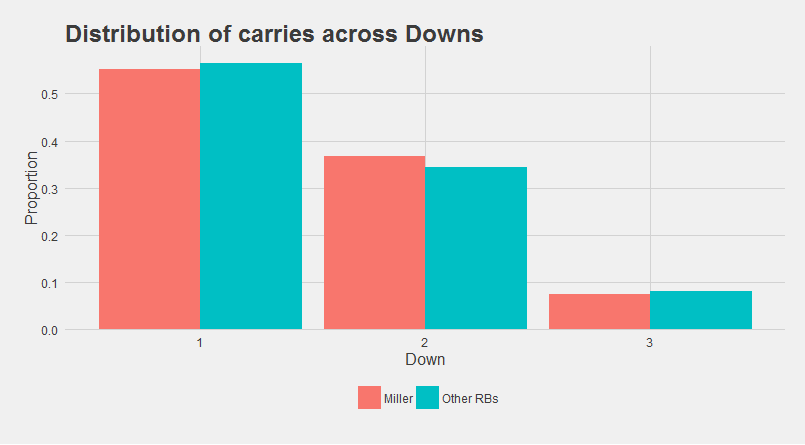
However, as Walker noted, the major concern for Miller is whether he ever can shoulder the type of volume that would put him in the same conversation as Demarco Murray and Frank Gore.
First, the Dolphins just aren’t a run-heavy team. Last year, they had by far the fewest rushing attempts in the NFL. But even as a proportion of his team’s run game, Miller has never been one of the volume Grinders. He tends to carry about 60-65% of the RB touches as a starter, with an active run share that’s actually pretty modest:
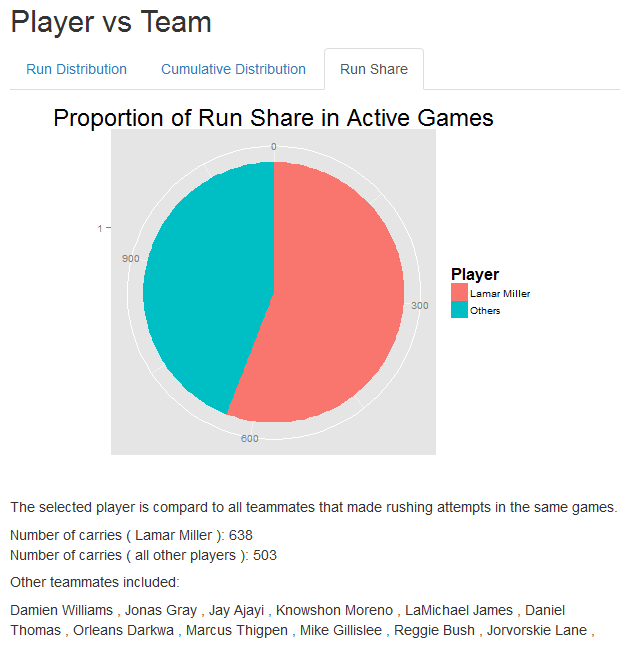
It will be interesting to see if the Texans keep him on the field more. But even if they give him exactly the same share of the workload as he’s used to, Miller will be getting significantly more carries: The Texans have been top-5 in rushing attempts for two consecutive years now (I mean, with their quarterback situation… wouldn’t you?). If Miller had been carrying exactly the same portion of the run game last year on the Texans instead of the Dolphins, he’d have 70 additional carries and would have had the 5th highest RB volume in football. Start dialing up his share of the carries alongside the increase in team carries, and you’re looking at the potential for some serious numbers.
But it’s quite possible that Miller just can’t handle that kind of volume. Honestly, we just don’t know, because the Dolphins have never used him in that manner.
And 2015 didn’t do him any favors. On the ground, it was his worst year to date. And not just in terms of the volume stats - it shows up in the rate stats and run distributions as well.
Miller was pretty consistent in his first three years, posting a good 50-carry rookie year, a decent sophomore year as the team’s starter, and a great 2014 as starter.
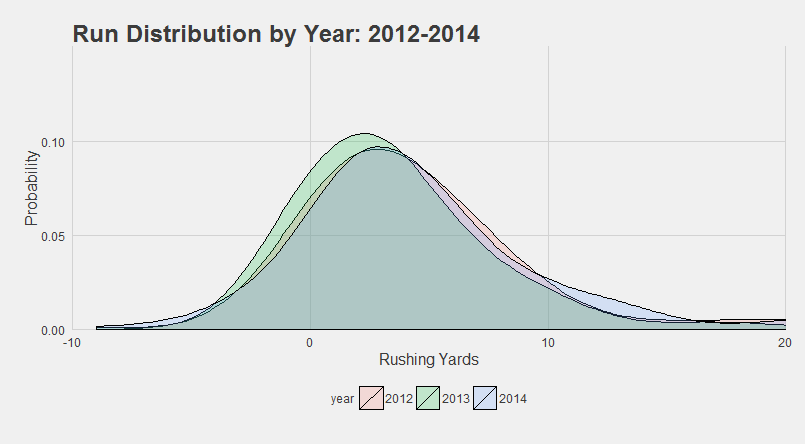
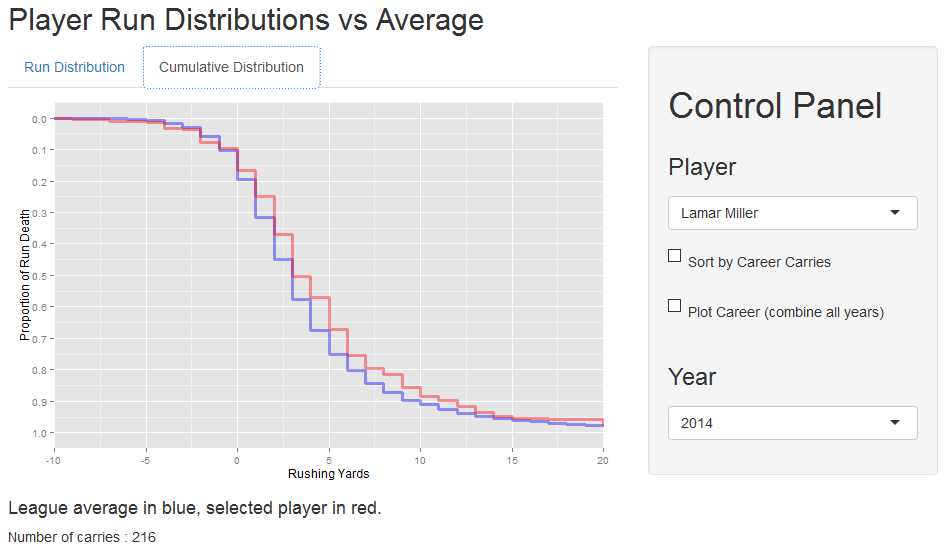
But then he backslid.
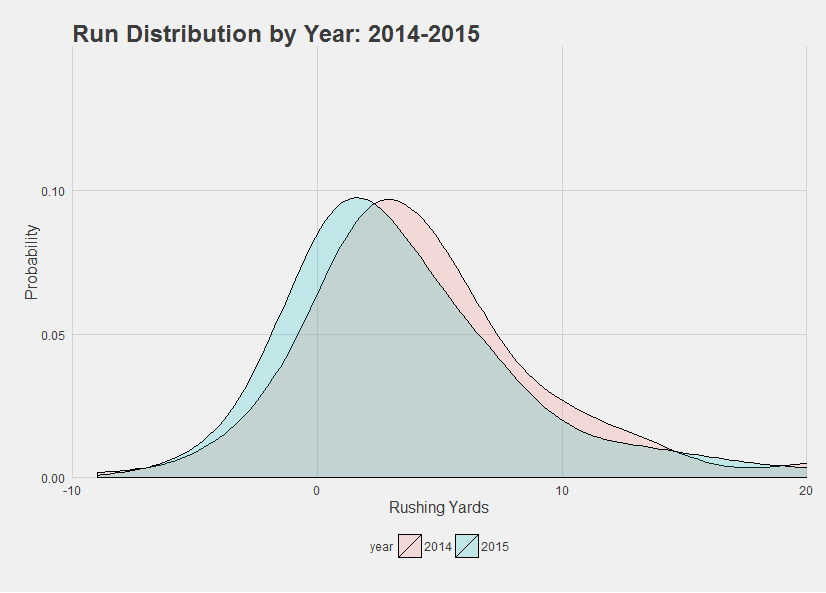
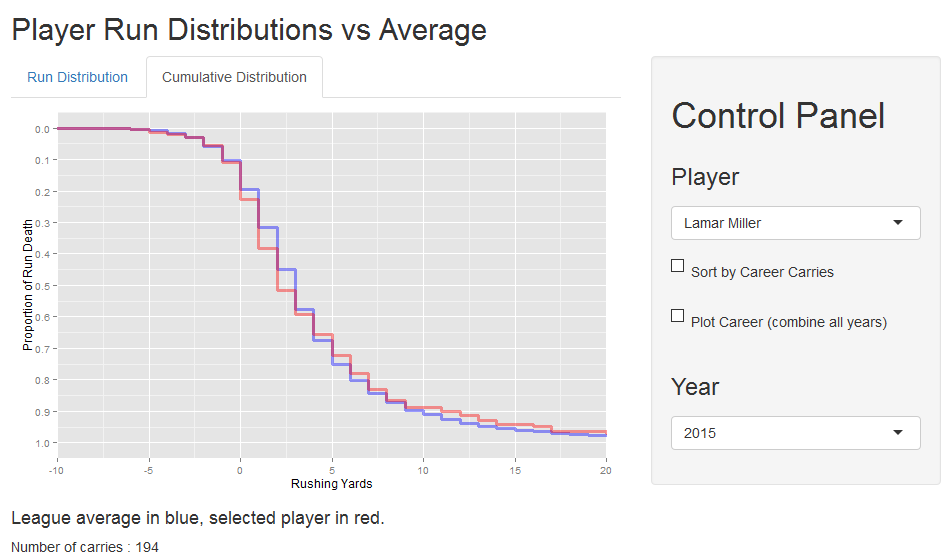
That looks suspiciously like slowing down. This is apparent in the comparison to his teammates. In 2014, he was head and shoulders the best runner on the team:
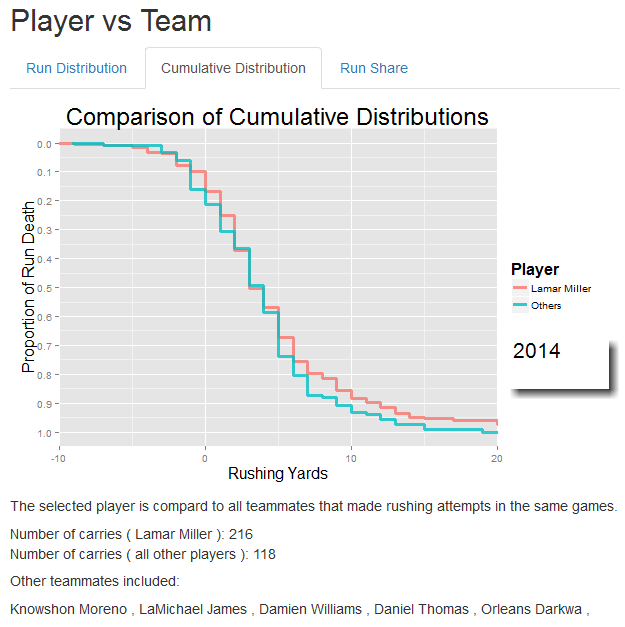
And in 2015, that clear dominance started to fade:
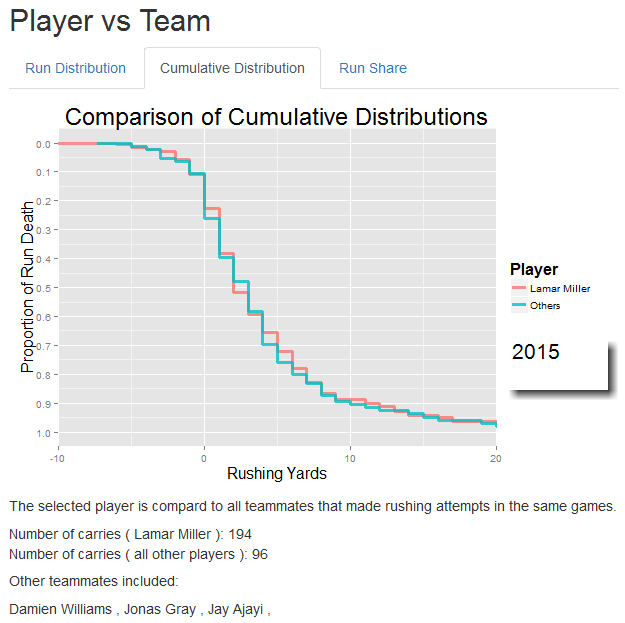
Sure, the composition of the backfield changed between years, but I’m not sure we can just brush this off by saying that “maybe Jay Ajayi and Jonas Gray are really really good???”.
However, even 2015 had it’s bright spots. Though his ability to break through the contested yards clearly suffered, he still managed to tear out a few big chunks of yards here and there.
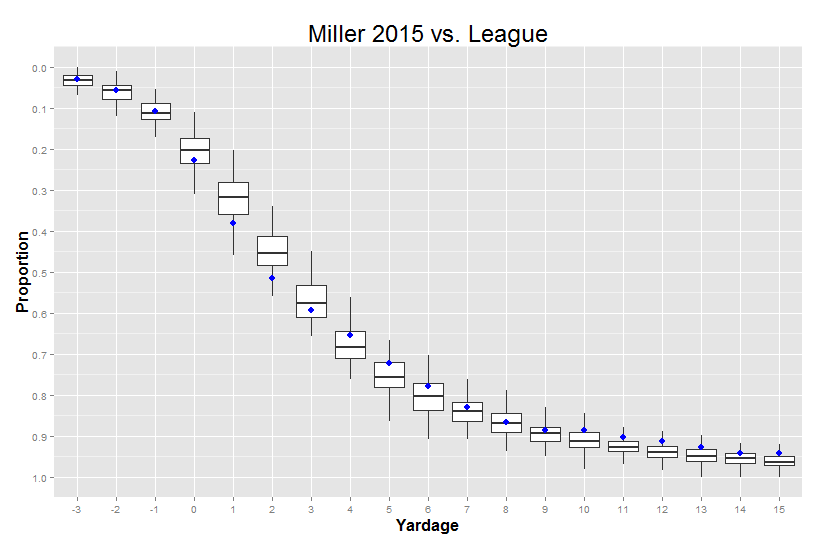
This does look somewhat like the product of a good runner behind a bad line. Given better blocking, I would be cautiously optimistic of more years like 2014.
In sum, I think there’s a lot to like with Miller. He’s tough, efficient, fast, versatile, and has improved significantly as an air threat and pass blocker. He’s shown some considerable talent on the field as a runner, and the Texans should provide plenty of opportunity for him to carry the rock. But there is plenty of risk for Houston as well. Miller has never handled a consistent volume, so it’s unclear whether his record of efficiency and durability will continue. Further, 2015 really was a down year for him, and not just because he was underutilized. The carries he did have just didn’t look like his usual self. It’s possible he’s already lost a step. But ultimately, I probably come down on the optimistic side. Though the offense as a whole leaves a bit to be desired, new acquisition Jeff Allen is a monster run-blocking guard, and the team’s previous best run blocker Derek Newton just signed a 5-year extension at tackle. If the unit clicks like it should, I think Miller will see enough room to break out plenty of his characteristic bursts. And at the same time, Miller’s improvements in the passing game should pay dividends in the Arian Foster role of the Texans offense.
I like the move for Houston. As sad as it is to see Foster walk, I think Miller is a really smart choice for a successor.